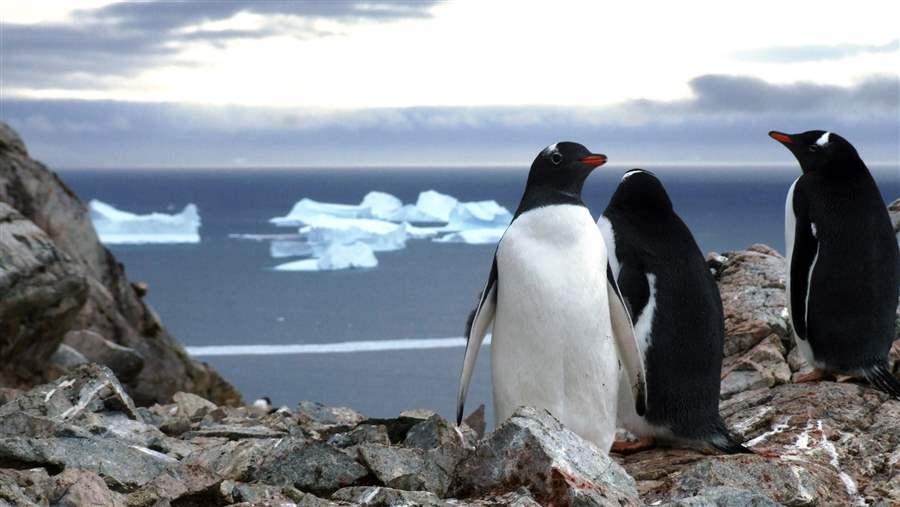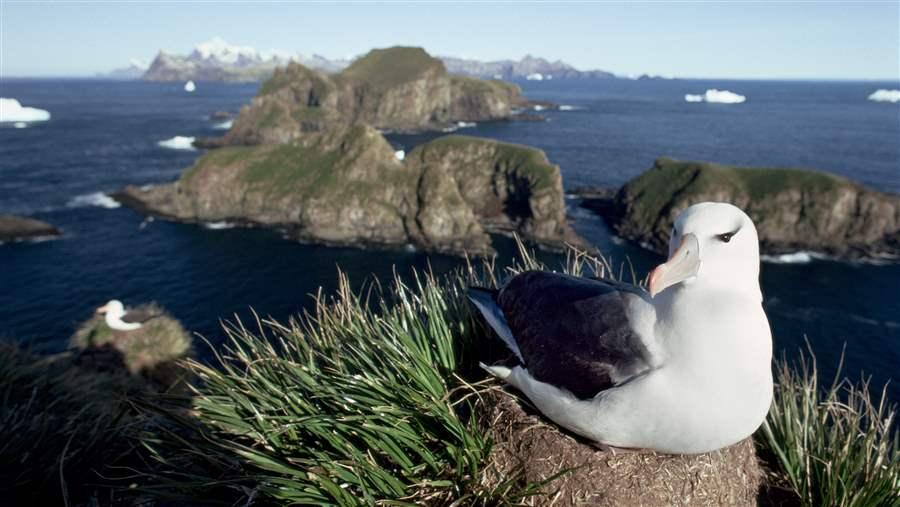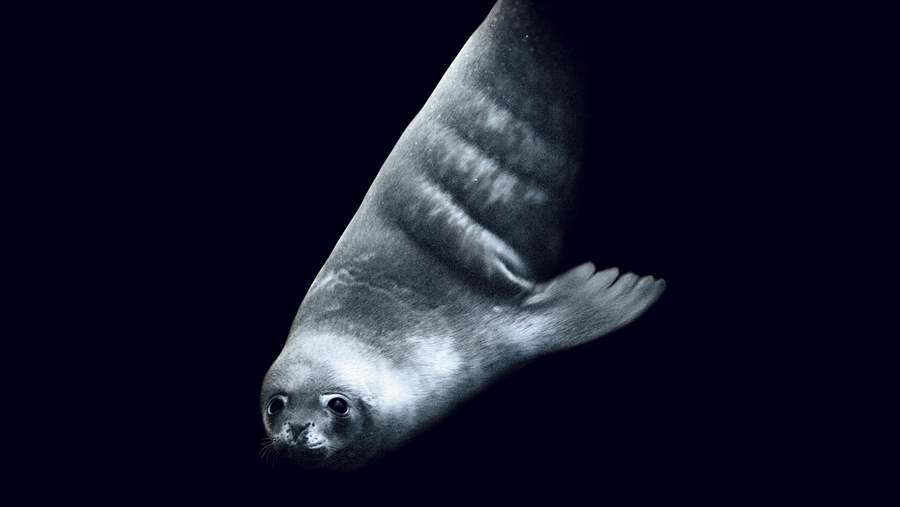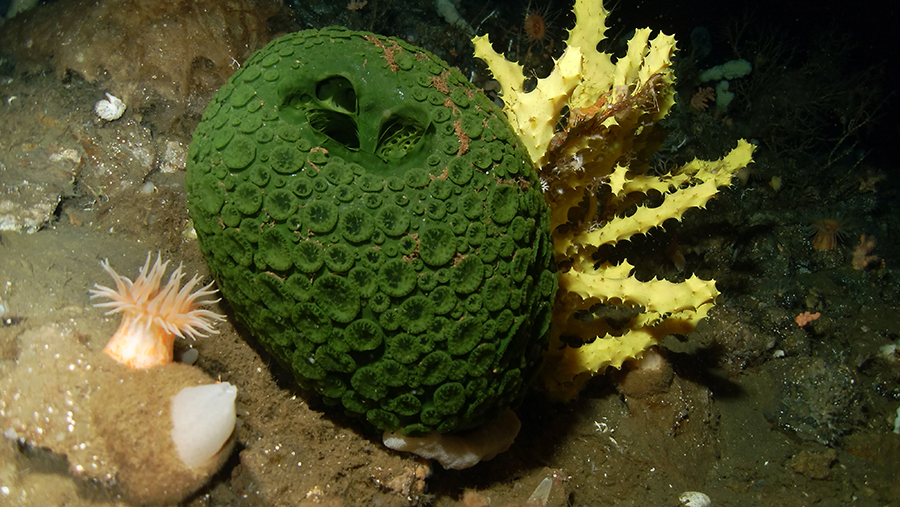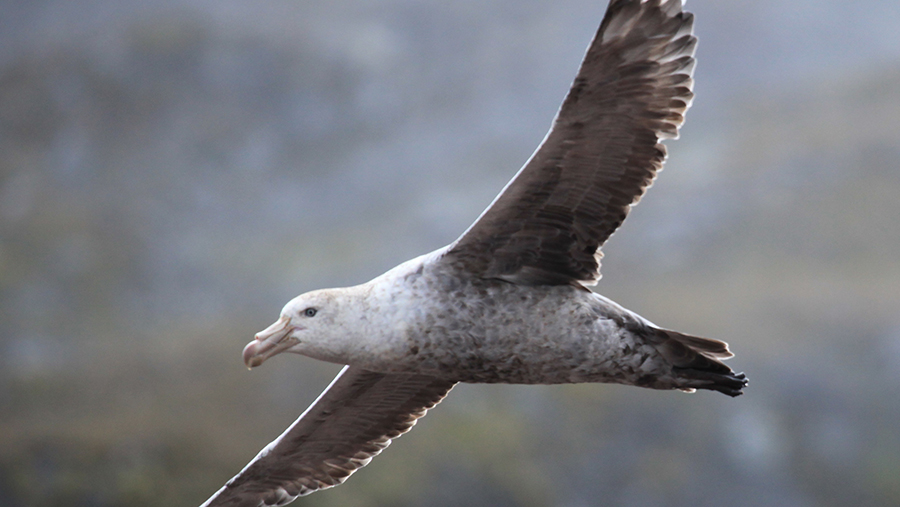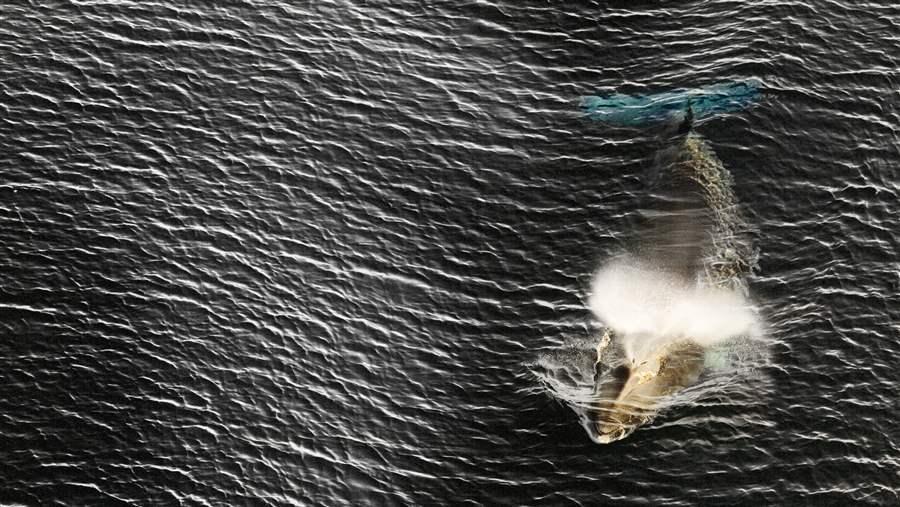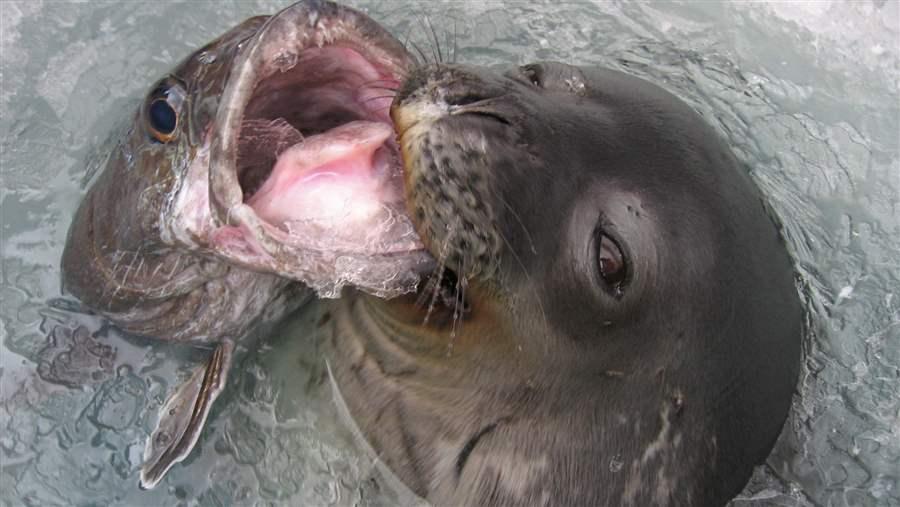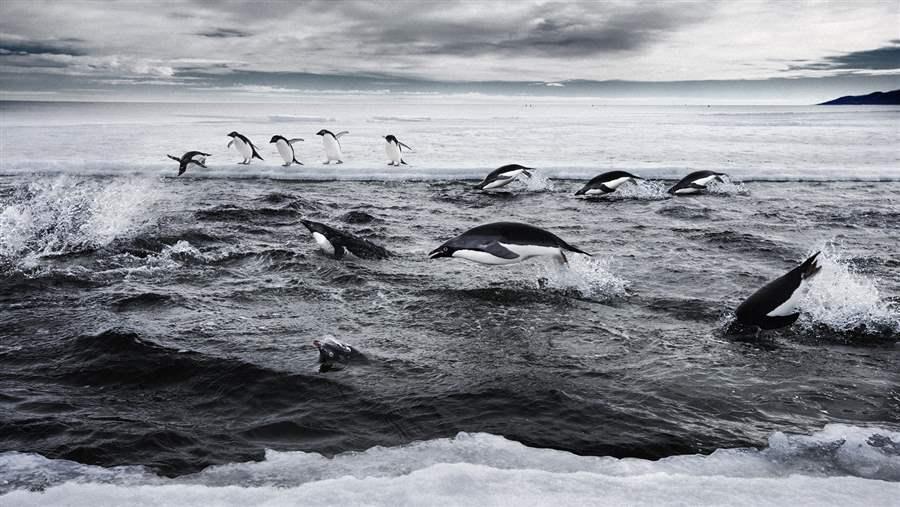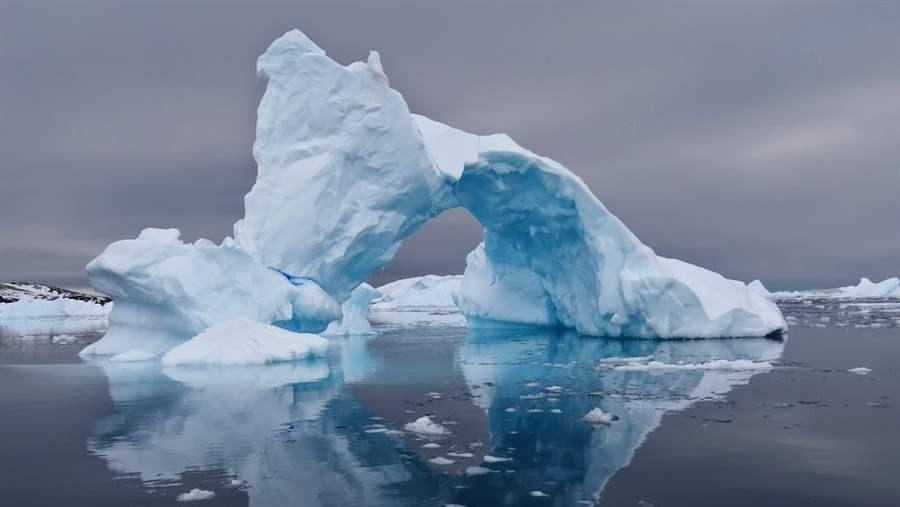A Network of Marine Protected Areas in the Southern Ocean
Protecting one of Earth’s last great wilderness areas
This fact sheet was revised June 11, 2019 to reflect the current status of the Southern Ocean MPA proposals.
Overview
The Southern Ocean, surrounding Antarctica, is one of the least altered marine ecosystems on Earth. Encompassing 15 percent of the world’s ocean, it is home to thousands of species found nowhere else, from brilliantly hued starfish and bioluminescent worms to pastel octopuses. It is also home to millions of penguins that depend on large swarms of krill, a tiny shrimplike crustacean, as well as other forage species that form the base of a delicate food web. Scientists believe this ecosystem is changing due to the impact of climate change and temperatures that are warming faster than nearly anywhere else on Earth.
These waters are also vital to the health of the planet, producing strong upwelling currents that carry critical nutrients to seas around the world.
To protect this spectacular region, The Pew Charitable Trusts and its partners are working with the Commission for the Conservation of Antarctic Marine Living Resources (CCAMLR) and its member governments to establish a network of large-scale marine protected areas (MPAs) around Antarctica.

CCAMLR’s commitment to creating a network of MPAs
CCAMLR is an international body made up of 24 countries and the European Union, established in 1982 with the primary mission of protecting the Southern Ocean’s diverse marine life. While prioritizing conservation, CCAMLR allows limited fishing in some areas in accordance with its ecosystem-based management approach. The main fishing activities in these waters target toothfish and Antarctic krill.
- In 2002, CCAMLR became the first international body to commit to creating a network of MPAs following recommendations from the United Nations World Summit on Sustainable Development.
- CCAMLR’s commitment was based on a mission to protect, rather than exploit, life in the Southern Ocean, as well as the precautionary principle, which errs on the side of conservation when the best available science is limited or unclear.
- In 2011, CCAMLR members agreed by consensus to adopt Conservation Measure 91-04,1 a framework for creating a network of MPAs, and identified nine planning domains2 for developing these protected areas.
Mitigating and adapting to climate change
Some of the most pronounced effects of climate change on Earth, such as warming and acidifying seas,3 and changes in sea-ice concentration and duration,4 are found in Antarctica. Studies show that MPAs can help build ecosystem resilience to those changes by eliminating stresses, such as fishing.5
- The relatively undisturbed waters of the Southern Ocean provide a natural laboratory for studying how intact marine ecosystems react to a warming and acidifying ocean.
- MPAs can also protect important carbon pools, also known as biological reservoirs, and sinks. Over 55 percent of the biological carbon stored globally is kept by living marine organisms.6
- Antarctic krill feed on microscopic plankton near the ocean surface and move to deeper waters, injecting carbon dioxide as they excrete waste. It is estimated that up to 23 million tons of carbon are locked in this way every year, equivalent to the carbon produced by 35 million cars.
Greater than the sum of its parts
A network of MPAs would not only preserve connectivity among the many unique ecosystems of the Southern Ocean, allowing marine life to migrate between protected areas for breeding and foraging, but it would also significantly contribute to global ocean protection goals.
- In 2016, the journal Conservation Letters published a scientific review concluding that at least 30 percent of the global ocean needs to be set aside in MPAs to achieve effective conservation results and help manage and rebuild depleted fish stocks.7
- According to a 2014 study in the journal Nature, to be successful, an MPA should be large, isolated, wellenforced, long-lasting, and should prohibit any extraction of fish or other resources.8
- MPAs that meet the above criteria create a spillover effect, improving the health of marine life in waters outside of the protected regions.9


Facts: The 9 planning domains
Domain 1: Western Antarctic Peninsula
Over 1.5 million pairs of Adélie, gentoo, and chinstrap penguins call the Antarctic Peninsula home.10
Domain 2: South Georgia and South Sandwich Islands
These waters are a sanctuary of marine wonder, home to populations of Patagonian toothfish, squid, lanternfish, and even octopuses, sharks, and nine fish species found nowhere else.11
Domain 3: Weddell
Sea Both seabirds and mammals are found throughout this region, including minke, humpback, blue and fin whales12, as well as Weddell, crab-eater and elephant seals.13
Domain 4: Bouvet and the Maud Rise
As the most isolated island in the world,14 Bouvet Island is mostly covered by glaciers with a rich sea floor, including sponges, molluscs, crustaceans, and worms.15
Domain 5: Crozet Islands and the Del Cano Rise
Eddies lying between two fronts of the Antarctic Circumpolar Current drive annual phytoplankton blooms,16 drawing fish and squid that in turn feed local populations of sea-birds and mammals, including globally significant breeding populations of penguins; northern and southern giant petrels; white chinned petrels; wandering, sooty, and light mantled albatrosses; and the threatened grey-headed and wandering albatrosses.17
Domain 6: Kerguelen Plateau
Lying between the Antarctic Convergence and the Antarctic Circumpolar Current, the Kerguelen Production Zone is an open-water, highly productive region with rugged deep-water habitat that nourishes whales and sea-birds migrating through the area as well as immense populations of land-based predators, including breeding king penguins,18 Antarctic fur seals, and elephant seals.19
Domain 7: East Antarctica
Toothfish, the top fish predators in East Antarctica, produce their own anti-freeze proteins to keep their blood from crystallizing20 and can grow to nearly 2 metres in length. Recently, scientists have discovered that nearly double the amount of Adélie penguins live in East Antarctica than was previously thought.21
Domain 8: Ross Sea
This region supports remarkable biodiversity, including more than 150 types of starfish and urchins, 40 species of which are found nowhere else on Earth;22 minke whales; Weddell and leopard seals; and a genetically distinct population of orca, or killer whale, referred to as ecotype-C, which is adapted to feed on Antarctic toothfish.23
Domain 9: Amundsen and Bellingshausen seas
These seas have significant sea ice cover, making large areas unreachable to researchers and limited to fishers. A recent survey of the sea-floor community found that 96 percent of the region’s isopods, a type of crustacean, were species new to science.24
Looking ahead
Successfully implementing a network of MPAs in the Southern Ocean would exemplify global cooperation in the face of increasing environmental challenges.
In 2016, the annual CCAMLR meeting showcased an example of such cooperation with the consensus designation of the world’s largest MPA, in the Ross Sea. The 2.06 million-square-kilometre (almost 800,000-square-mile)10 area includes 1.55 million square kilometres of open water and extends to the coastline under the Ross Ice Shelf. The MPA, more than three times the size of France, went into force in December 2017.
With the establishment of the Ross Sea Region MPA, CCAMLR has taken the first step needed to create a network of large-scale MPAs. The next steps toward reaching this goal must include designating the proposed Weddell Sea, East Antarctic and Antarctic Peninsula (Domain 1) MPAs. Further efforts must also be taken to safeguard Domain 9.

- Commission for the Conservation of Antarctic Marine Living Resources, “Conservation Measure 91-04: General Framework for the Establishment of CCAMLR Marine Protected Areas” (2011), https://www.ccamlr.org/en/measure-91-04-2011.
- Commission for the Conservation of Antarctic Marine Living Resources, “Marine Protected Areas (MPAs),” accessed March 14, 2017, https://www.ccamlr.org/en/science/marine-protected-areas-mpas.
- Elizabeth M. Jones et al., “Ocean Acidification and Calcium Carbonate Saturation States in the Coastal Zone of the West Antarctic Peninsula,” Deep Sea Research Part II: Topical Studies in Oceanography (2017): doi:10.1016/j.dsr2.2017.01.007.
- Sharon E. Stammerjohn et al., “Trends in Antarctic Annual Sea Ice Retreat and Advance and Their Relation to El Nino–Southern Oscillation and Southern Annular Mode Variability,” Journal of Geophysical Research 113, no. C3 (2008): C03S90, http://onlinelibrary.wiley.com/doi/10.1029/2007JC004269/abstract.
- International Council for the Exploration of the Sea, “Report of the Study Group on Designing Marine Protected Area Networks in a Changing Climate (SGMPAN)” (2010), https://www.researchgate.net/publication/263888915_Report_of_the_Study_Group_on_Designing_Marine_Protected_Area_Networks_in_a_Changing_Climate_SGMPAN.
- National Oceanic and Atmospheric Administration, “Marine Protected Areas: Building Resilience to Climate Change Impacts,” accessed March 14, 2017, http://marineprotectedareas.noaa.gov/pdf/helpful-resources/mpas_climate_change_march_2013.pdf.
- National Oceanic and Atmospheric Administration, “Marine Protected Areas: Building Resilience to Climate Change Impacts,” accessed March 14, 2017, http://marineprotectedareas.noaa.gov/pdf/helpful-resources/mpas_climate_change_march_2013.pdf.
- Bethan C. O’Leary et al., “Effective Coverage Targets for Ocean Protection,” letter, Conservation Letters 9, no. 6 (2016): 398–404, http://dx.doi.org/10.1111/conl.12247.
- Graham J. Edgar et al., “Global Conservation Outcomes Depend on Marine Protected Areas With Five Key Features,” letter, Nature 506 (2014): 216–220, http://dx.doi.org/10.1038/nature13022.
- Callum M. Roberts, Julie P. Hawkins, and Fiona R. Gell, “The Role of Marine Reserves in Achieving Sustainable Fisheries,” Philosophical Transactions of the Royal Society B: Biological Sciences 360, no. 1453 (2005): 123–32, http://dx.doi.org/10.1098/rstb.2004.1578.
- Hugh W. Ducklow et al., “Marine Pelagic Ecosystems: The West Antarctic Peninsula,” Philosophical Transactions of the Royal Society 362, no. 1477 (2007): 67–94, http://dx.doi.org/10.1098/rstb.2006.1955.
- Government of South Georgia and the South Sandwich Islands, “South Georgia and the South Sandwich Islands Marine Protected Area Management Plan” (2013), http://www.gov.gs/docsarchive/Environment/Marine%20Protected%20Area/MPA%20Management%20Plan%20v2.0.pdf.
- Campbell R. Davies and Nick Gales, “A Brief Review of Sanctuary Theory as It Applies to the Review of the Southern Ocean Sanctuary and the Observed Patterns in Great Whale Populations in the Southern Ocean,” SC/56/SOS2, International Whaling Commission Scientific Committee (2004).
- Cheryl A. Tosh et al., “Adult Male Southern Elephant Seals From King George Island Utilize the Weddell Sea,” Antarctic Science 21, no. 2 (2009): 113–21, https://www.cambridge.org/core/services/aop-cambridge-core/content/view/S0954102008001557.
- Lee Siebert, Tom Simkin, and Paul Kimberly, Volcanoes of the World, 3rd. ed. (Oakland, California: University of California Press, 2010), http://www.jstor.org/stable/10.1525/j.ctt1pnqdx.
- Angelika Brandt et al., “Maud Rise: A Snapshot Through the Water Column,” Deep Sea Research Part II: Topical Studies in Oceanography 58, no. 19–20 (2011): 1962–82, http://www.sciencedirect.com/science/article/pii/S0967064511000609.
- Hugh J. Venables, Raymond T. Pollard, and Ekaterina E. Popova, “Physical Conditions Controlling the Development of a Regular Phytoplankton Bloom North of the Crozet Plateau, Southern Ocean,” Deep Sea Research Part II: Topical Studies in Oceanography 54, no. 18–20 (2007): 1949–65, http://www.sciencedirect.com/science/article/pii/S0967064507001518.
- Amanda T. Lombard et al., “Conserving Pattern and Process in the Southern Ocean: Designing a Marine Protected Area for the Prince Edward Islands,” Antarctic Science 19, no. 1 (2007): 39–54, https://www.cambridge.org/core/services/aop-cambridge-core/content/view/S0954102007000077.
- Charles-André Bost et al., “Feeding of Diving Predators and Diel Vertical Migration of Prey: King Penguins’ Diet Versus Trawl Sampling at Kerguelen Islands,” Marine Ecology Progress Series 227 (2002): 51–61, http://www.int-res.com/abstracts/meps/v227/p51-61.
- Mary-Anne Lea et al., “Colony-Based Foraging Segregation by Antarctic Fur Seals at the Kerguelen Archipelago,” Marine Ecology Progress Series 358 (2008): 273–87, http://www.academia.edu/26554658/Colony-based_foraging_segregation_by_Antarctic_fur_seals_at_the_Kerguelen_Archipelago.
- Last Ocean Charitable Trust, “Antarctic Toothfish (Dissostichus mawsoni),” accessed Feb. 13, 2017, http://www.lastocean.org/Commercial-Fishing/About-Toothfish/All-about-Antarctic-toothfish-__I.2445.
- Colin Southwell et al., “Large-Scale Population Assessment Informs Conservation Management for Seabirds in Antarctica and the Southern Ocean: A Case Study of Adélie Penguins,” Global Ecology and Conservation 9 (2017): 104–15, http://dx.doi.org/10.1016/j.gecco.2016.12.004.
- Janet Bradford-Grieve and Graham Fenwick, “A Review of the Current Knowledge Describing the Biodiversity of the Ross Sea Region,” National Institute of Water and Atmospheric Research, prepared for the Ministry of Fisheries Research Project ZBD2000/01 (2001), http://fs.fish.govt.nz/Page.aspx?pk=113&dk=22489.
- Robert L. Pitman and Paul Ensor, “Three Forms of Killer Whales (Orcinus orca) in Antarctic Waters,” Journal of Cetacean Research and Management 5, no. 2 (2003): 1–9, http://www.heardisland.org/HD_documents/HE_Library/Marinebiology/PitmanandEnsor2003JCRM.pdf.
- Stefanie Kaiser et al., “Biodiversity of an Unknown Antarctic Sea: Assessing Isopod Richness and Abundance in the First Benthic Survey of the Amundsen Continental Shelf,” Marine Biodiversity 39 (2009): 27–43 https://link.springer.com/article/10.1007/s12526-009-0004-9.
- Commission for the Conservation of Antarctic Marine Living Resources, “CCAMLR to Create World's Largest Marine Protected Area,” news release, Oct. 28, 2016, https://www.ccamlr.org/node/92518.





